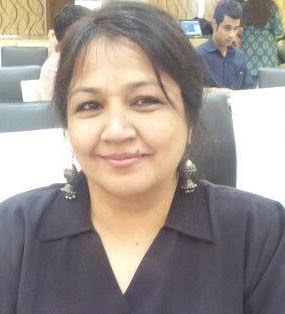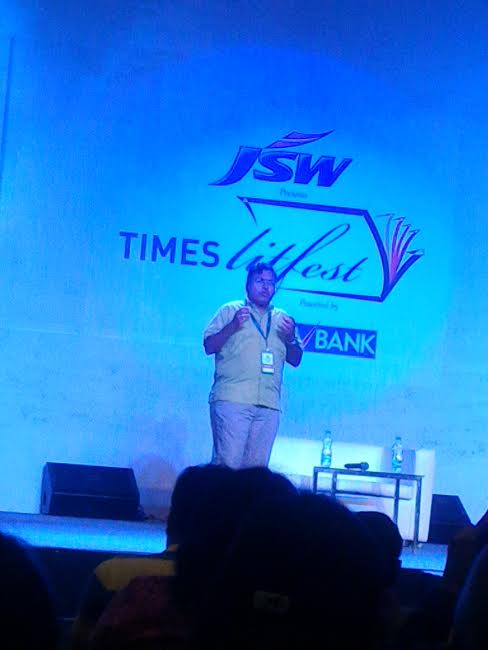 |
| Author Sunanda Chatterjee |
Here's an insightful author, whose story ideas are so realistic because she's inspired by real life characters. Read on to know her style:
The main character in Shadowed Promise is Moyna, whose background is partly based on the story of one of my acquaintances. After her sister died, my friend adopted her nephew on her mother’s request, while she was still single. She fell in love, got married and only when she had her own child did she tell her husband about the ‘adopted’ kid.
Sanchita: How did you happen to conceive the story? I ask this because I remember you reading about an article on child marriages and how that inspired you to write ‘Fighting for Tara’.
Sunanda: The main character in Shadowed Promise is Moyna, whose background is partly based on the story of one of my acquaintances. After her sister died, my friend adopted her nephew on her mother’s request, while she was still single. She fell in love, got married and only when she had her own child did she tell her husband about the ‘adopted’ kid. It nearly destroyed her marriage. I used that for Moyna and added the burden of being the unloved child. Tania was going to be the favorite child, the pretty sister, but my daughter didn’t like the idea of a mother loving one child more than the other. So Moyna became Tania’s cousin. Making her believe she was bad luck glued the story together.
Sanchita: Your characters often have a lot of conflict resolution to do which definitely adds layers to the story. As an author, how do you help your characters in resolving their conflicts?
Sunanda: The whole idea of interesting fiction is:
(1) for the main character to be likeable or relatable
(2) to have a believable objective (a desperate desire)
(3) to be deprived of that through obstacles
(4) to finally succeed
In most of my stories, the obstacles my main characters face are both mental and physical. Sometimes they are told by society they cannot achieve their objective, sometimes it is their own mind that prevents it. I make my characters jump through hoops to reach the heights they are capable of, but unaware of that capability. In my stories, unconditional love, forgiveness, and redemption play a big role. So my characters make mistakes and redeem themselves, they are flawed, but likable, they suffer, but survive in the end. They find strength from their loved ones, or have an epiphany that breaks their mind set, or get help from unexpected quarters. In 'Shadowed Promise', Moyna’s conflicts started in childhood, mainly due to her aunt. And even though Sameer telling her she is not bad luck puts a Band Aid, deep in her heart she still believes it. The resolution can only come from the source. So when at last her inner conflict is resolved, she is able to fix her outer conflicts.
Sanchita: How long did it take for you to complete ‘Shadowed Promise’ from conception till the end?
Sunanda: It took me about eight months and three drafts. I changed the plot a lot, and added the secondary characters’ stories. In one initial outline, Moyna marries Aaron. When I decided to keep Sameer as the male lead, I made Lupe and Aaron a couple, who became great surrogates for Moyna. I had just finished the first draft of 'Fighting for Tara' when I started 'Shadowed Promise'. Then I got into Moyna’s head and was in so deep, that I had to finish it before getting back into Hansa’s head to polish the manuscript. It sounds silly, but there it is.
Sanchita: Which part of writing the story do you enjoy the most and why? Conceptualising, story boarding, concluding or reading the final draft?
Sunanda: Each part of novel writing has its own thrill. Personally, I enjoy outlining the most. Everything is fluid and flexible, words need not flow, prose need not be perfect, point of view decisions can come later. I’ll tell you an example. In my work in progress, I have a scene where the main character goes for a banquet in a wealthy person’s house and is ridiculed by the people there. I just write one line in the outline: “She gives keys to valet. Accepts champagne. Fancy food, fancy wine, fancy clothes, blah blah, bitchy snobs all around.” That sentence will become a full-fledged scene. It is very freeing, that initial phase. New characters are waiting to be born, new conflicts are itching to confront the MC.
The next part is also refreshing when I’ve decided whose point of view the scene will be from. I describe what she sees, smells, hears. That’s fun too, and sometimes I write a scene from two POVs and select the best one. The next draft will be when I’ve finalized the POV, and I get to describe what she feels and thinks. And the last one will be when I go ‘up the ladder of abstraction’ and describe what it all means in the big scheme of things.
Sanchita: Sneak peek into your next project.
Sunanda: I am working on a saga called Old Money. The main character is a Kashmiri pundit girl growing up in California. She falls in love with a handsome hunk whose family is filthy rich. His family ridicules her and wants him to marry another rich girl. Her own family, which is middle class, refuses to accept him because he turns out to be her cousin… Or is he?... If he isn’t her cousin, everything she believes about herself is a lie. As she goes on a journey to find her identity, dirty truths and secrets are revealed.
Rapid fire round (first thought that comes to mind on hearing these words)
a. Emotional: mother’s love
b. Promises: hard to keep
c. Tragedy: strength
d. Redemption: relief
e. Author: Jhumpa Lahiri
Sunanda's book 'Shadowed Promise' is available at:










